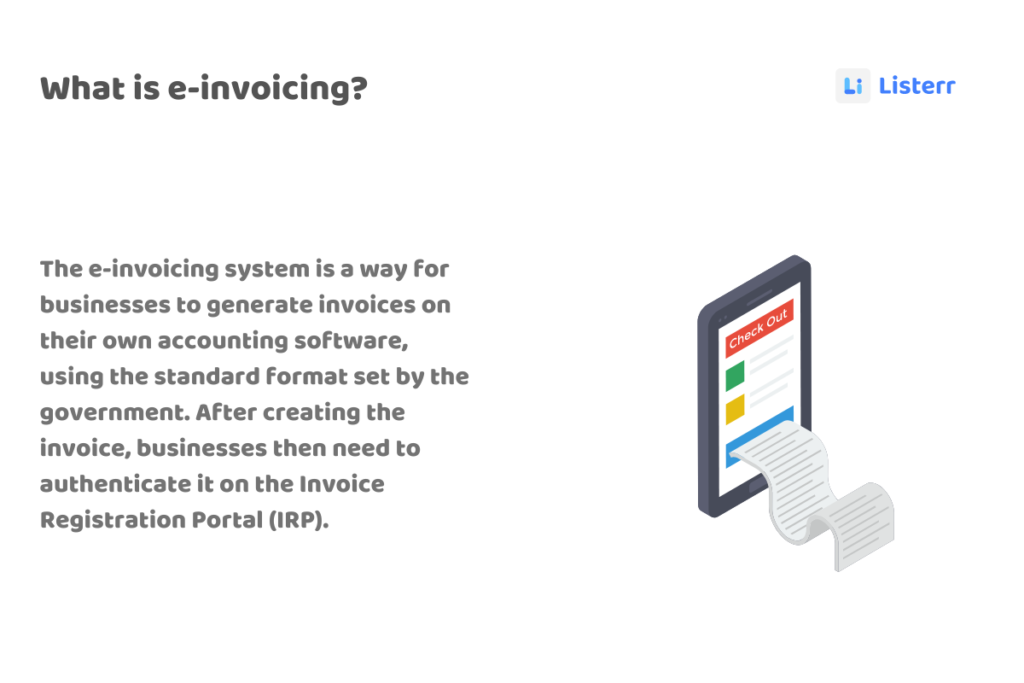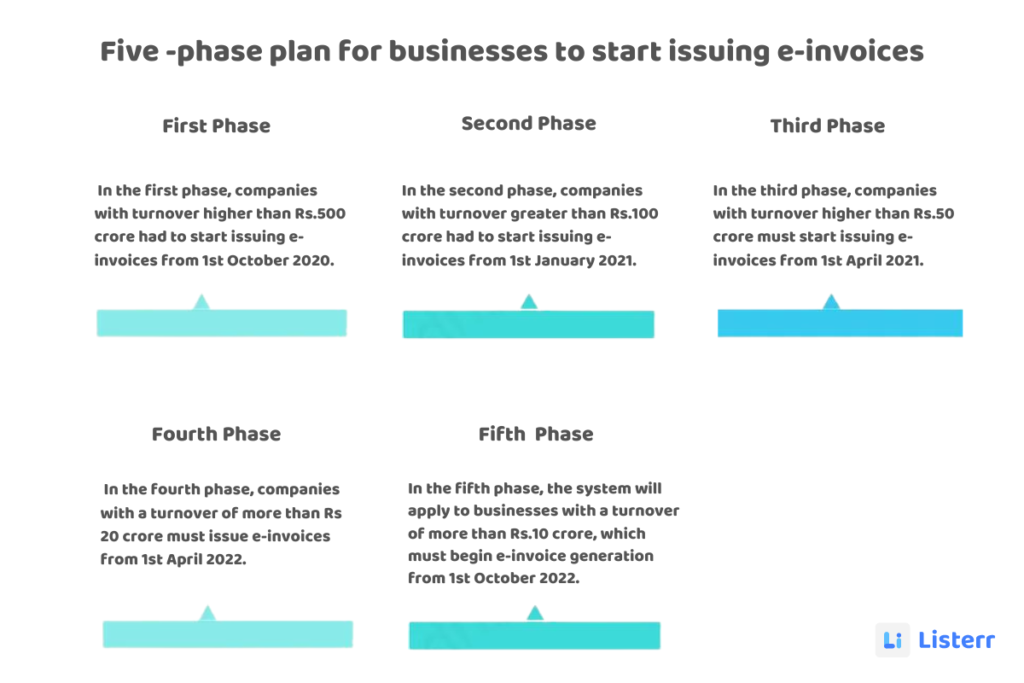E-Invoicing is a system that allows businesses to generate invoices electronically, in a standard format that is compliant with tax regulations. This can save businesses time and money by reducing the need for manual invoicing and data entry.
The Central Board of Indirect Taxes and Customs announced the fourth phase of e-invoicing in February 2022. This will include businesses with a turnover exceeding INR 20 crore. Several lakh small and medium businesses will now come under the purview of this digital reform. They will need to generate e-invoices from 1 April 2022.
In this article, we decode the e-invoicing reform and explain how small businesses can prepare in order to meet the deadline that is less than a month away.
What is e-invoicing? How does the e-invoicing system work?
The e-invoicing system is a way for businesses to generate invoices on their own accounting software, using the standard format set by the government. After creating the invoice, businesses then need to authenticate it on the Invoice Registration Portal (IRP).
Once authenticated or validated, the IRP generates an invoice reference number (IRN) and QR code and digitally signs the invoice. This invoice, now known as an e-invoice, is then returned to the original taxpayer, and the data from the e-invoice is sent to the e-way bill and GST portals for generating e-way bills and for populating the GST returns.
It is important to note here that so far, only B2B and export invoices come under e-invoicing. Further, the government has exempted sectors such as insurance, banking, NBFC, financial institutions, Goods Transport Agencies (GTA), passenger transport services, cinema, and SEZ units.

A walk through of the e-invoicing journey in India
E-invoicing was first introduced in October 202. The government has put in place a five-phase plan for businesses to start issuing e-invoices. In the first phase, companies with turnover higher than Rs.500 crore had to start issuing e-invoices from 1st October 2020. In the second phase, companies with turnover greater than Rs.100 crore had to start issuing e-invoices from 1st January 2021. In the third phase, companies with turnover higher than Rs.50 crore must start issuing e-invoices from 1st April 2021.
The government has mandated that, in the fourth phase, companies with a turnover of more than Rs 20 crore must issue e-invoices from 1st April 2022. In the fifth phase, the system will apply to businesses with a turnover of more than Rs.10 crore, which must begin e-invoice generation from 1st October 2022.
This new initiative will help businesses save time and money, as well as improve their compliance with government regulations. It is yet another example of the government’s commitment to making it easier for businesses to operate in India.

How does e-invoicing benefit both the government and taxpayers?
The primary goal of e-invoicing was to streamline the invoice format and promote compatibility between businesses and tax agencies. However, e-invoicing provides many advantages that go beyond this. For instance, e-Invoicing helps the government monitor all B2B transactions conducted by businesses in real-time, preventing fake invoices and input tax credit (ITC) fraud. Each e-invoice contains a QR code that makes it easy for tax officers to verify its authenticity – especially helpful for goods that are in transit. Consequently, QR codes make it difficult for businesses to get away with fraudulent activity.
For businesses, the benefits are plenty as well. The data from e-invoices get auto-populated in the GST returns and e-way bills. This reduces the whole data duplication exercise. It also speeds up the ITC claims process and assures taxpayers that only genuine ITC is being reported.
What are the consequences of non-generation of e-invoices?
Eligible businesses who fail to comply with e-invoicing norms could be met with huge penalties of up to INR 10,000 per invoice for non-generation and up to INR 25,000 for incorrect e-Invoicing.
It could also create an unfavourable impact on their business. For instance, if an e-invoice does not get generated, then the B2B invoices do not get populated in the GST returns. This affects seller-buyer relationships as the buyers’ GSTR-2A/2B also do not get auto-populated, and they cannot claim input tax credit. Non-generation of e-invoices means that the e-way bills for B2B supplies cannot be generated either, as an IRN is now mandatory for e-way bill generation. This could lead to the detention of goods and penalties.
What are the other e-invoicing options available to small businesses?
There are several leading, trusted e-invoicing solutions in the market that offer a more advanced web-based tool for generating e-invoices. These UI tools are user-friendly and can be set up in as less as 10-15 minutes. Here, businesses get an Excel template to ingest and upload the data to generate e-invoices in bulk with a single click.
Besides the bulk generation of e-invoices, it is important to select an e-invoicing solution that offers advanced features like 200-plus data validations, MIS reports, smart dashboards, 7-8 years of data archival, a quick response time, and SmartScreen corrections to correct errors on screen and reduce errors. It would also help an enterprise immensely if their e-invoicing solution offers a unified tool for e-way bill generation as well so that businesses can fulfil all compliances in one place.
What about the ERP integration options for the automated generation of e-invoices?
ERP integration for e-invoicing is one of the popular modes for e-invoice generation by large enterprises. However, smaller businesses sometimes don’t prefer it due to the cost factor. Though, you cannot put a price on accuracy, as invoices generated under this mode are virtually error-free. Here, the ERP or accounting system of the taxpayer is integrated with the IRP for the automated generation and cancellation of e-invoices, all of which takes place in real-time.
If an enterprise is considering the ERP integration mode for e-invoice generation, it is better to go with a reputed and trusted e-invoicing solution. They will lay down the various options and help your company in making the right choice within your budget. They will also complete the setup and training process and resolve all queries in real-time.
If your enterprise is newly eligible, you have just three weeks left to implement invoicing and train your staff to use the new system. It’s best to get started now, rather than wait until the last moment. Any glitches that are detected can be fixed well in advance of the deadline, and the system will be up and running by 1 April.
e-invoicingecommerceinvoices

